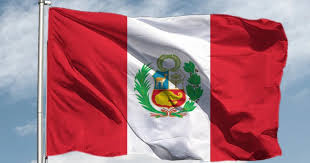
WASHINGTON, March 3 (NNN-AGENCIES) — Nearly two months after some active service personnel and veterans took part in the deadly attack on the US Capitol, the United States military has begun to tackle extremism within its ranks — but the fight promises to be a difficult one, by the very admission of its leaders.
New Defense Secretary Lloyd Austin, the first African-American to hold the position, ordered all units to hold a day of discussions on right-wing and white supremacist extremism.
“It concerns me to think that anyone wearing the uniform of a soldier, or sailor, airman, Marine or guardian or Coast Guardsmen would espouse these sorts of beliefs, let alone act on it,” Austin said in a video recorded for the discussion days.
“But they do. Some of them still do.”
In a country where freedom of speech is enshrined in the Constitution — and vigorously defended in society — instructions were sent to all unit commanders on how to lead debate without encroaching on the civil rights of some 1.3 million service members.
If a member raises the concern of free speech infringement during the discussion, their superiors have been directed to remind them that military personnel have access to sensitive information and weapons. Therefore, the government reserves the right to evaluate their judgment and reliability.
“Any doubt is resolved in favor of the national security,” say the instructions, which were released by the Pentagon.
The program also recommends that units reread the oath taken by each service member upon their arrival in the ranks. In particular, each member of the military promises to “support and defend the Constitution… against all enemies, foreign and domestic.”
Some military personnel privately expressed concerns that their profession was being singled out in the face of rising extremism throughout society.
But according to CNN, 21 of the first 150 rioters arrested since the fatal January 6 attack on the Capitol building were current or former military personnel — 14 percent, a far higher proportion than in the general population, of which military members make up only 5.9 percent.
Several of those arrested belonged to the white supremacist “Oath Keepers” movement, whose leaders have been charged with conspiracy to carry out the Jan 6 attack.
One reason for the disproportionate representation among military personnel or veterans, according to General Kenneth McKenzie, the head of the US Central Command that oversees troops deployed in Afghanistan, Iraq and Syria, is that soldiers who have experienced combat sometimes feel superior to the rest of the population.
“It is possible for someone to become entitled with that feeling, especially if you got out, you served out there in the fight. People tried to kill you. It’s easy to come back and feel that you’re inherently superior to your fellow citizens,” he said.
“But actually, we’re all citizens in the end.”
The military has never measured the extent of extremism in the armed forces. The phenomenon was ignored for more than a decade despite reports from the FBI and Department of Homeland Security on the infiltration of law enforcement and the military by white supremacists.
But “extremism is a growing concern inside the ranks,” said Pentagon spokesman John Kirby. “How big is it? We don’t know… The numbers are probably larger than we would like.”
A senior officer saidthat his son, deciding between two military universities, visited one of his preferred schools to get a sense of the atmosphere. The student who gave him a tour opened his own locker to show off his most prized possession: a Nazi uniform.
The officer’s son chose the Naval Academy in Annapolis, Maryland instead, and his father reported the pro-Nazi student to the other school’s administration.
For McKenzie, all this shows the military has an “issue of leadership.”
“I think a commander who tells you that there’s no problem is a commander that really doesn’t know what’s going on in his or her unit,” McKenzie said.
“I would say if the leaders can’t do the job, then you need to get new leaders.” — NNN-AGENCIES





